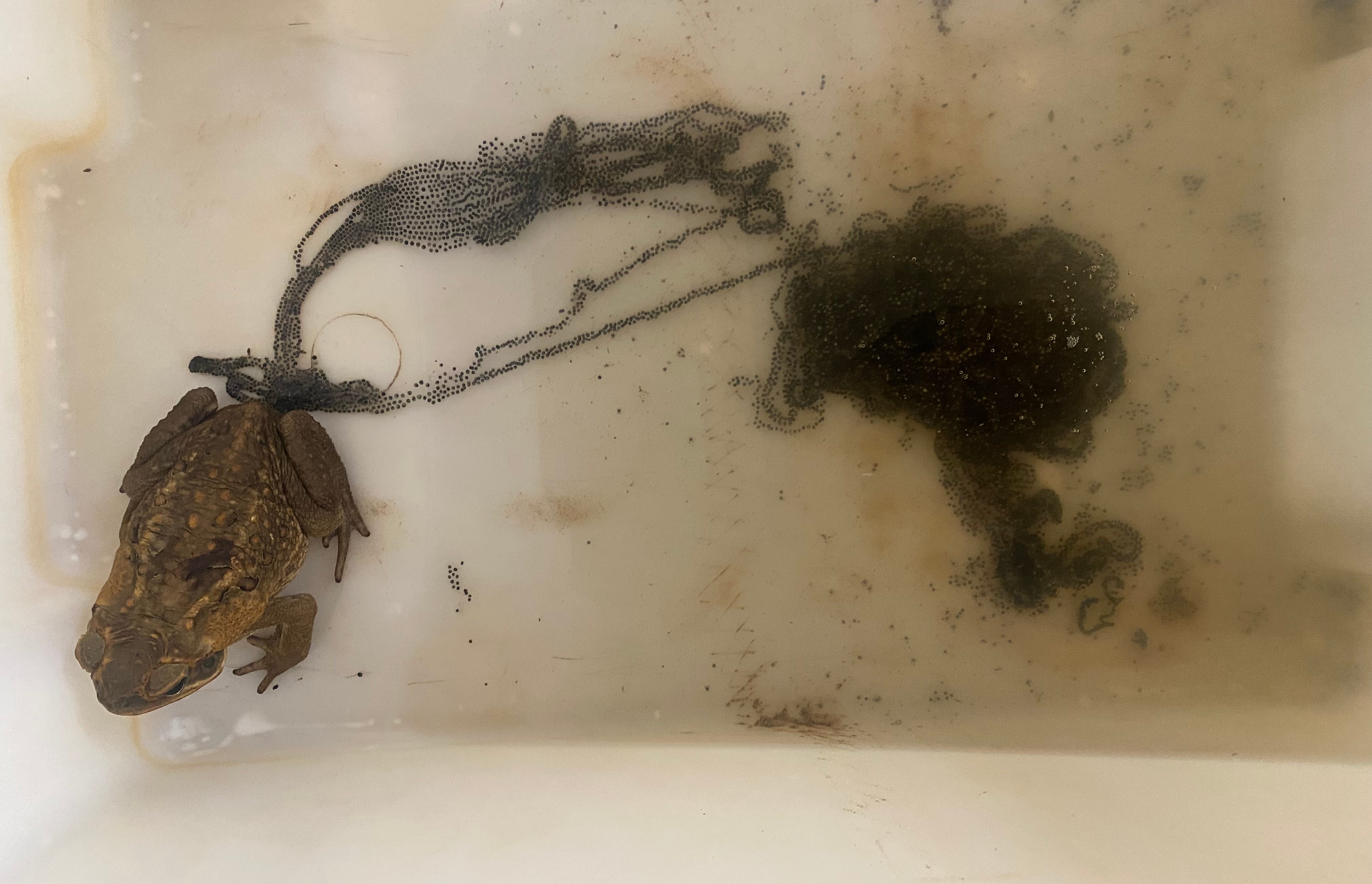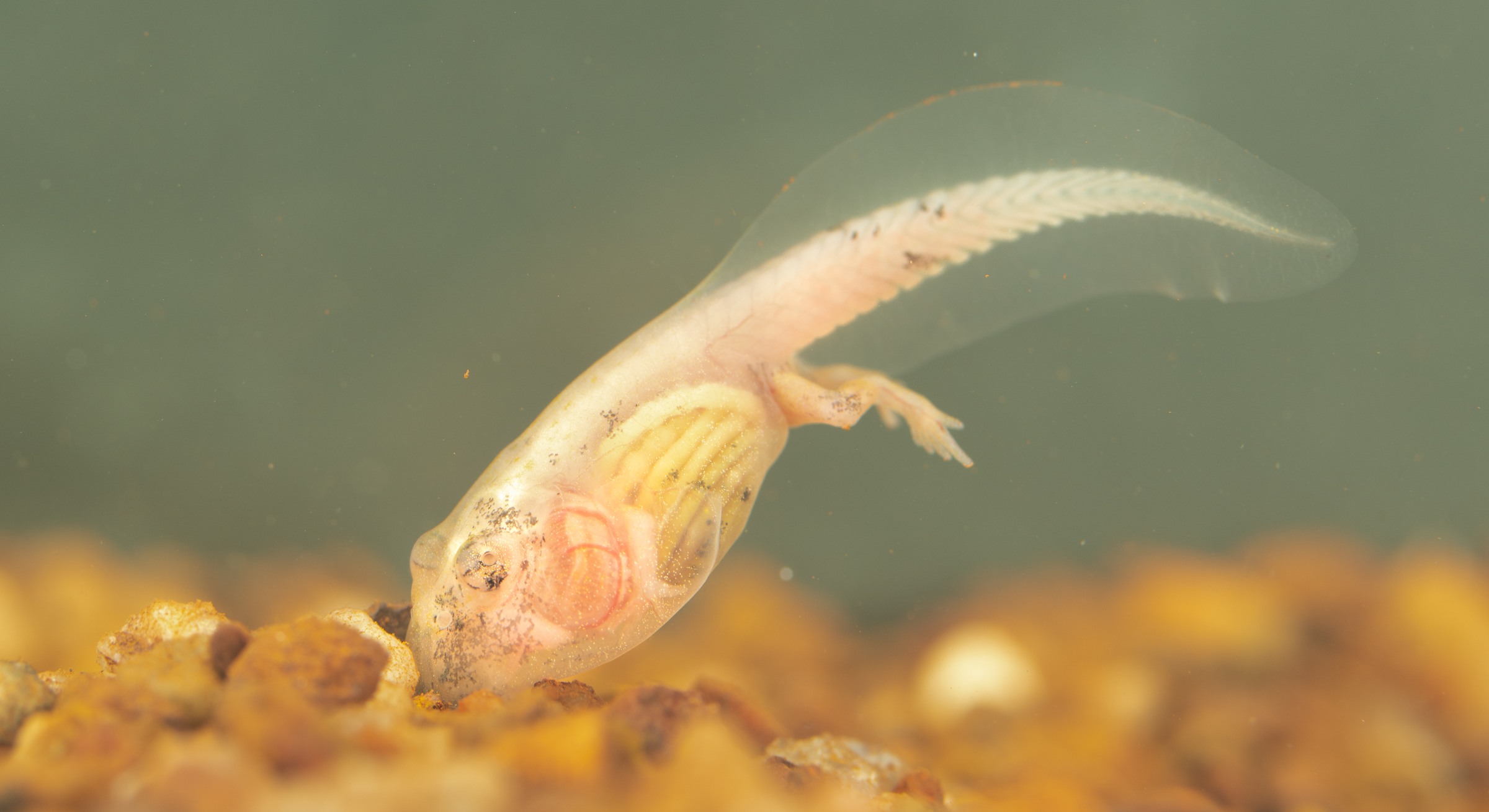Scientists have knocked out genes that trigger cane toad tadpoles to turn into active toads, turning them into “Peter Pan”-like perpetual adolescents. The work provides a way to slow or halt the spread of an invasive species that is wreaking havoc on Australian ecosystems everywhere that heat and high rainfall coincide.
Cane toads were introduced to Australia in the hope they would keep down the cane beetle. It’s a biosecurity disaster the country has never lived down, the only comfort being that lots of other countries did it too, for the same reason. However, Professor Rick Shine of Macquarie University told IFLScience, nowhere else has suffered consequences on the Australian scale.
For decades, Shine has been leading the only team to make serious progress in fighting the toad. However, he told IFLScience existing applications of their work aren’t enough. The new solution is to modify the toads while still in the egg, turning them into “Peter Pan” toads, which, like the character, never grow up, and rely on their cannibalistic tendencies to stop other toads.
Cane toads produce poisons to deter predators. In Central and South America, where the toads originate, their predators have evolved defense mechanisms, which Shine told IFLScience can make them 30,000 times less sensitive than their Australian counterparts. In many other places, the toads have been introduced, the predators have experience with other toad species, and have adaptations, allowing them to keep the toads at tolerable numbers. Hawaii, without any native predators capable of tackling a toad, has seen a toad explosion, but it’s in northern Australia that things got truly dire.
Many Australian natives, from lizards and freshwater crocodiles to marsupial quolls, think the toads look meal-sized, and have spent too many millions of years without encountering a relative to maintain defenses. Their naivety leads these predators to die from their first toad meal. Toads spread largely unhindered, and the loss of key species devastates ecosystems.
Years ago, Shine’s team identified the one weak point in the toad’s armor. The toads are cannibals in Australia, curiously to a far greater degree than in their home range, Shine noted. Cane toad tadpoles mostly live on algae and bacteria, but will hasten to eat any eggs of their own species they can access, cutting down competition. They can find the eggs relatively easily, attracted by the same toxin that makes the adults poisonous to others.
Shine’s team developed traps that draw tadpoles to them using the same chemical. Now widely available, these have proven valuable in keeping toad numbers under control in certain areas, but, as Shine explained to IFLScience, “It’s a lot of work to set traps and then remove the tadpoles afterwards. Removing them also removes the cannibals, so when the next toad that comes along and lays eggs, they’re fine.” These traps are a step up on catching individual adult toads, but they’re not a complete answer against a species where each female is capable of laying 20-30,000 eggs a mating season.

Every dot is an egg, making it clear why trapping adult toads will never be an effective form of control.
Image Credit: Rick Shine
On the other hand, as long as the tadpoles stay tadpoles, they make water bodies treacherous for any eggs of their own species. The team looked for a way to keep the tadpoles in killer mode.
Toads need the molecule thyroxine to trigger metamorphosis. The toads normally get this through a set of genes, which trigger the release of the molecule. By knocking out one of the key genes in the release process with CRISPR-Cas9 (used to make the not-direwolves), Shine’s team created a set of tadpoles that never become toads, and therefore can never threaten native wildlife, or reproduce.
These Peter Pan tadpoles grow at the same rate as ordinary ones, but because they keep growing after the others would metamorphize, they grow much larger.
Prof. Rick Shine
Better still, Shine explained to IFLScience, because they are knocking out a gene, rather than adding one in from a distant part of the tree of life, the toads do not qualify as Genetically Modified Organisms under Australian law. That makes it far easier to get approval for the edited toad eggs’ release. Shine said positive responses have already been received from two of the three jurisdictions in which the team would like to trial the eggs’ release.
Before getting to that stage, the team needed to know whether the loss of the gene had any undesirable consequences. What if the tadpoles’ thirst for their own species’ eggs ended with the gene’s deletion? Instead, the team was delighted to discover that the edited tadpoles instead eat four times as many of their own kind’s eggs.

As a practice run before knocking out the gene for metamorphosis the team removed the toad’s color genes, making them albino.
Image Credit: Etienne Littlefair
Shine told IFLScience the team thinks they understand only part of why that is. “The number of eggs consumed will depend partly on body size,” he said. “These Peter Pan tadpoles grow at the same rate as ordinary ones, but because they keep growing after the others would metamorphize, they grow much larger.” However, the edited tadpoles are also more attracted to the toxin, apparently detecting it in smaller quantities than typical toads can, and Shine acknowledged, “We don’t know why that is.”
The toads have a primeval look, and the project sounds slightly too reminiscent of Jurassic Park to avoid concerns that somehow the toads will reverse their edits and life will find a way. Shine says this is very unlikely, but even if it were to happen, “We’d just be releasing cane toads into areas that already have cane toads.” Not desirable perhaps, but also no disaster. With the edited tadpoles living on algal films when they can’t get their brethren’s eggs, there’s little risk of them devastating a water body’s ecology. As Shine notes, plenty of other species live on the same diet in those waters.
Nevertheless, Shine notes, “The history of biocontrol in this country is horrendous”, so the team intends to be very cautious about any releases to avoid adding to that, extensively testing their interactions with native wildlife in controlled environments.
Although one can never be sure until the project is trialed in the wild, which Shine hopes to do when the next breeding season starts later this year, there is only one obvious obstacle to success. That is that editing needs to be done egg by egg, and the process is too slow and expensive to meet demand. Some rare specimens live longer, but most edited tadpoles only live for 3-4 months, Shine told IFLScience. That’s enough to guard a waterbody for a mating season in some places, but it needs to be replaced each year, if not sooner.

Trials of the Peter Pan tadpoles will begin in areas near where wetlands meet desert, which makes tracking the adult toads a challenge
Image Credit: Rick Shine
Ideally, what the team would like is to produce toads that lack the relevant genes, but are still able to reproduce, giving them a near-endless supply of suitable eggs. This may seem impossible, but since exposure to thyroxine will cause a tadpole to metamorphize, it may be possible to edit some eggs, produce tadpoles that become Peter Pans, only to rudely yank them out of Neverland, chemically, not genetically.
The team has yet to do this, let alone learn whether such former Peter Pans pass on the key characteristics to their descendants, but after decades of battling, the team can finally see light at the end of the toad tunnel.
Although previous rounds of Shine’s battle with cane toads led to many scientific papers, he told IFLScience, the latest project is yet to be published in a scientific journal.
Source Link: “Peter Pan” Cane Toads Gene-Edited To Never Grow Up Could Save Australian Tropical Ecosystems